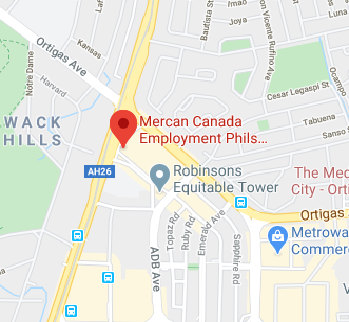Biometrics exemptions
Biometrics exemptions
This section provides direction specific to exempting an applicant from providing one or both pieces of biometric information.
Biometrics exemptions are listed under subsection R12.2(1) and sections R12.6, R12.7 and R12.8 of the Immigration and Refugees Protection Regulations (IRPR). It is important that officers enter the proper exemption category to ensure program integrity and for reporting purposes.
Exemptions
Below are the biometrics exemptions with an explanation of each of their intended uses.
- Requests from applicants
- Age
- Royal Family
- U.S. national
- Head of State, diplomat or official
- U.S. transit
- Visa-exempt foreign national
- Simultaneous temporary residence applications or requests
- 1 in 10
- Permanent residence to temporary residence
- Visiting Forces Act
- Impossible or not feasible
Requests from applicants
If a person submitting their application at a visa application centre (VAC) claims to be exempt from the biometrics requirement, the VAC must attach a note to the physical file to inform the Immigration, Refugees and Citizenship Canada (IRCC) office that a biometric enrolment did not take place and cite the claimed exemption category. The VAC should inform the applicant that the IRCC office will determine if they are exempt.
If the application is submitted online or directly to the IRCC office, the IRCC office records the claimed exemption category directly into the Global Case Management System (GCMS).
If the IRCC office determines that the applicant does not fall within 1 of the exemption categories, a biometric instruction letter will be sent to the applicant directing them to provide their biometric information.
If a designated officer determines that the applicant qualifies for a biometric exemption, the exemption category will be reflected in the application, and the application review process will continue.
Age
Under paragraphs R12.2(1)(a) and R12.2(1)(b)
- Asylum claimants aged 14 or older are required to provide biometrics (no upper age limit).
- In all other cases, applicants younger than 14 years or older than 79 years are exempt from providing biometric information.
- The age of a temporary residence applicant is set to the date the application is received, and the age of a minor permanent residence applicant is set by using the lock-in date defined in the permanent residence process.
Royal Family
Under subparagraph R12.2(1)(c)(i)
- Her Majesty Queen Elizabeth II, Queen of Canada, and any member of the Royal Family who applies for a work or study permit or makes a request or application for a temporary resident permit (TRP) is exempt from the biometrics requirement.
U.S. national
Under subparagraph R12.2(1)(c)(ii)
- U.S. nationals who apply for a work or study permit, or who make a request or application for a TRP, are exempt from the biometrics requirement.
- U.S. green card holders are exempt from providing biometrics for temporary resident visas (TRVs).
Head of State, diplomat or official
Under paragraphs R12.2(1)(e), R12.2(1)(f) and R12.2(1)(g)
- Applicants who qualify for or hold a diplomatic (D-1) or official (O-1) visa are exempt from the biometrics requirement.
- Applicants who are issued courtesy visas are required to provide their biometrics; however, the Migration Program manager can waive the requirement, under paragraph R12.2(1)(f), in the interest of bilateral relations.
- Live-in caregivers and private servants of diplomats and officials must provide their biometric information. If their employer is on official business, live-in caregivers are required to pay the fee, and private servants are exempt from paying the fee.
For additional information, see Temporary residents: Diplomatic and official visas.
U.S. transit
Under paragraph R12.2(1)(h)
- Those holding a valid U.S. non-immigrant visa and applying for a TRV to transit to Canada for less than 48 hours directly to or from the U.S. are exempt from the biometrics requirement.
Visa-exempt foreign national
Under paragraphs R12.2(1)(i) and R12.2(1)(j)
- Visa-exempt foreign nationals who require an electronic travel authorization and seek to enter or remain in Canada as visitors are exempt from the biometrics requirement.
Simultaneous temporary residence applications or requests
Under section R12.6
- An applicant needs to provide their biometric information only once when they are applying for more than 1 application or request for temporary residence at the same time.
1 in 10
Under subsection R12.7(1)
- Temporary residence applicants are not required to provide their biometrics in support of any subsequent temporary residence applications (including TRVs, work and study permits, visitor records and TRPs) made within a 10-year period of prior biometric enrolment.
- When issuing an immigration document, the officer must ensure its validity does not exceed the remaining validity of the applicant’s biometrics. Applicants may choose to voluntarily re-enroll their biometrics and pay the required fee before the end of the 10-year period, which allows applicants to apply for a visa that extends beyond their current biometric validity. For example, applicants who want to apply for a new 10-year visa, and who last enrolled their biometrics 8 years ago, can obtain a visa for a maximum of only 2 years. If they wish to obtain a visa for a longer period, such as, the full 10 years, they need to resubmit their biometrics and pay the $85 fee.
Permanent residence to temporary residence
- Permanent residence applicants are required to enrol their biometrics in support of every application (even if the applicant has valid biometrics enrolled under the temporary resident stream). When foreign nationals have provided their biometrics in support of a permanent residence application, asylum claim or overseas refugee resettlement application, as long as the application or claim is still open, they are not required to provide new biometrics in support of a
- TRV
- work or study permit
- TRP application
- temporary residence extension
- Permanent residents who lose their status, due to residency requirements or voluntary renouncement of their permanent resident status, revert back to being a foreign national and, therefore, are required to provide their biometrics in support of any new applications.
Visiting Forces Act
Members of a country’s armed forces who are exempt from requiring a TRV and a passport, and who request a TRV to facilitate travel to Canada under the Visiting Forces Act, are not required to provide biometric information. This includes people who have been designated as civilian components of those armed forces.
Impossible or not feasible
This section provides direction specific to exempting biometrics from a person who otherwise would be biometrically required. When collection of one or both pieces of biometric information is impossible or not feasible, a designated officer must make this determination.
Under section R12.8, designated officers have the discretion to exempt applicants from providing one or both pieces of biometric information (fingerprints and photo), as the case may be, if it is determined that the collection of biometric information is impossible or not feasible.
Designated officers should apply this exemption on a case-by-case basis. Designated officers assess the exceptional circumstances associated with the client’s application and must document the specific findings that led to that decision.
After exemptions are identified
Officers must assess the eligibility and admissibility of each application before determining if an exemption applies.
If the designated officer grants an exemption from one or both pieces of biometric information, in all cases, the officer must do all of the following:
- Select the appropriate exemption category in GCMS (such as “Exempt-Imp./NF Permanent”).
- Add a note in GCMS explaining the reason for the exemption (such as “impossible under section R12.8” or “not feasible under section R12.8”).
- Add a description of the circumstance to the note described above.
- Reimburse the applicant’s biometric service fee, if applicable.
If, following their assessment, the designated officer decides not to provide an exemption from the biometrics collection requirement for any of the reasons listed above, the officer must do the following:
- Add a note in GCMS detailing all of the considerations and conclusions that led to the decision and listing all available evidence and how it was assessed.
- Give the applicant an opportunity to respond to the evidence and decision.
If the designated officer chooses to reverse the decision, they must follow the steps listed above.
Note: As the department furthers the resumption plan for biometrics collection services, IRCC has authorized new temporary public policies for foreign nationals:
- Worker-related special measures
- Biometric exemption for permanent residence applicants with previous biometrics on file: COVID-19 program delivery
For additional information on the above, please visit General processing measures: COVID-19 program delivery.


